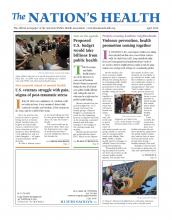Deciding whether a salad is healthier than french fries should be easy, but most fast food restaurants are better at feeding hungry customers in a hurry than steering them toward healthier foods, a new study finds.
Published Feb. 16 in the Journal of Urban Health, the study found that even when calorie listings provided by fast-food chain restaurants meet federal labeling requirements, they often fail to provide sufficient information and can be difficult for customers to decipher. In light of the increasing prevalence of obesity among American adults and children, the lack of usefulness is concerning, the study authors said, especially in low-income and urban neighborhoods where sources of more healthful foods might not be as common as fast food fare.
“Menu postings for individual servings are easily understood, but complex math skills are needed to interpret meals designed to serve more than one person,” the study authors noted. “In some items, calories doubled depending on flavor, and the calorie posting did not give enough information to make healthier selections.”
Conducted by researchers at Columbia University School of Nursing, the study looked at the calorie counts for 200 items on menu boards in fast food chain restaurants in the Harlem neighborhood of New York City, where a standard menu labeling law that includes some, though not all, of new federal requirements has been in effect since 2006. Under the federal health reform law passed in March 2010, restaurants with 20 or more locations are now required to provide calorie data and additional nutritional information for menu items and self-service foods. However, consumers are generally unaware of — or inaccurately estimate — the number of calories in restaurant food, the researchers noted.
The study found that most restaurants post calorie counts, but in the majority of cases, the information provided by the restaurant was insufficient to be useful at the point of purchase. The majority of the items on the menu boards studied were combination meals rather than individual items, but calculating calories per meal when the posting included anything more than an individual unit of measure was difficult, the authors noted.
According to the researchers, calorie counts become more challenging as food items become more complex, especially combination and multi-serving items, which represented the largest percentage of items recorded and required several mathematical and nutritional calculations, which could be more challenging for people in low socioeconomic groups living in urban areas, where fast food chain restaurants tend to be most concentrated.
“In low-income communities with a high density of chain restaurants, and where educational attainment of consumers may be low, simplifying calorie postings and minimizing the math required to calculate calories would increase menu board utility,” the study authors said.
To collect the data, volunteers equipped with digital cameras worked in pairs and canvassed each designated area, block by block, to identify national restaurant outlets. A total of 70 menus and menu boards from 12 restaurant chains were photographed and 200 food items were rated.
Noting the need for menu boards that are useful at all levels of literacy, the study authors said they support a system that uses dashes or slashes to more intuitively associate calorie counts to food combinations instead of the current system of ranges. In such a revised system, a breakfast sandwich, for example, would be listed as “egg with ham/bacon/sausage 350/550/750.”
For more information or to obtain a copy of the study, visit www.nyam.org/news/publications/journal-of-urban-health.
- Copyright The Nation’s Health, American Public Health Association









